Are you considering saying goodbye to your video streaming service? Whether it's due to rising costs, lack of content, or simply shifting your entertainment preferences, you're not alone in this decision. Canceling your subscription can feel daunting, but it doesn't have to be complicated. Join us as we explore a straightforward letter template that will help you communicate your cancellation easily and effectively!

Account Information
Cancelling a subscription to a video streaming service can result in the loss of access to various media libraries and saved preferences. Users often retain account information that includes unique identifiers such as usernames, email addresses, and billing details. The cancellation process typically requires these details to verify identity, allowing the service provider to update their records effectively. Moreover, important dates, such as the cancellation deadline (often aligned with billing cycles), should be noted to avoid unexpected charges. Users may also consider exploring alternative subscriptions or services available in the market, enhancing their viewing options in response to cancellation.
Clear Subject Line
Video streaming service cancellation requests must be submitted with clarity. Consider using a concise subject line such as "Cancellation Request for Video Streaming Subscription." This ensures that customer service representatives prioritize and address your request promptly. Include account information such as subscriber ID and registered email for accurate identification. Specify the reason for cancellation (e.g., financial constraints, lack of content) to provide valuable feedback. Finally, request confirmation of the cancellation process and any potential final billing details to avoid unexpected charges.
Cancellation Request
The cancellation of a video streaming service subscription can be a frustrating process, especially when considering specific platforms such as Netflix or Hulu. Many users encounter issues with live chat support available during peak evening hours or long wait times for customer support. Cancellation requests typically require users to navigate through confusing menus on the account management page. Users may have to confirm their identity through multi-factor authentication, and renewal dates sometimes remain unclear. Additionally, users may face barriers like the potential loss of access to popular shows or movies, loss of saved watchlists, and unwanted renewal notices even after cancellation. Clear guidelines provided by streaming services regarding the terms and conditions of subscription termination can greatly improve the experience.
Service End Date
Canceling subscription services can be a straightforward process, especially for popular video streaming platforms such as Netflix or Hulu. Users typically create an account on these platforms, providing personal details and payment information for seamless access to a wide array of movies and television shows. Cancellation requests involve navigating to account settings to specify a service end date, which often reflects the user's billing cycle. For instance, if a user subscribes on April 15, 2023, the service might continue until May 14, 2023, depending on the platform's policies. Additionally, confirming cancellation via email may provide a reference for future inquiries. Users can avoid unexpected charges by ensuring notice is given before the next billing cycle kicks in, thereby fostering responsible financial management in the realm of digital media consumption.
Contact for Confirmation
Video streaming service cancellation processes typically involve specific procedures requiring user confirmation to avoid billing issues. A cancellation request may necessitate contacting customer support through various channels such as a dedicated phone number or online chat, often available 24/7 for immediate assistance. Users should prepare account information, including email address and subscription details, during this process to facilitate identity verification. Confirmation of cancellation may be provided via email, serving as a record for both the user and the service provider, ensuring adherence to cancellation policies and avoiding unforeseen charges.
Letter Template For Video Streaming Service Cancellation Samples
Letter template of video streaming service cancellation request for individual subscriptions
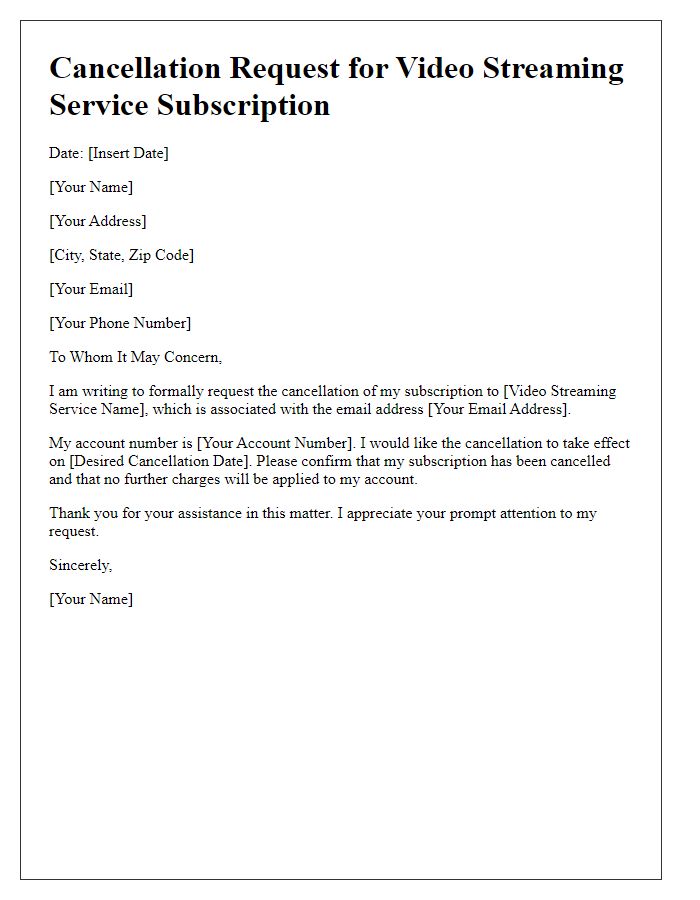
Letter template of video streaming service cancellation for family plan users
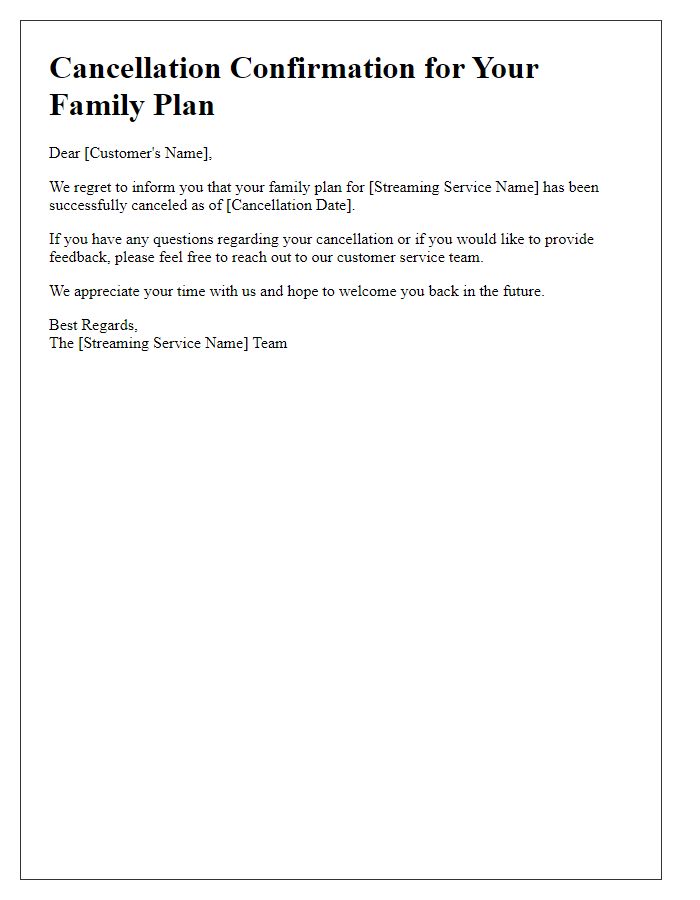
Letter template of video streaming service cancellation due to dissatisfaction
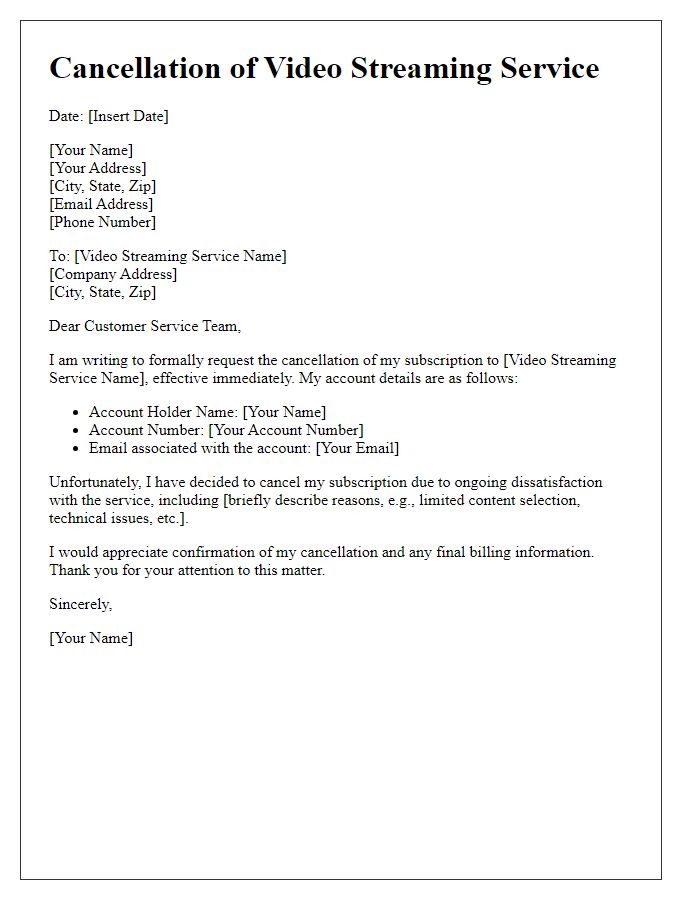
Letter template of video streaming service cancellation for financial reasons
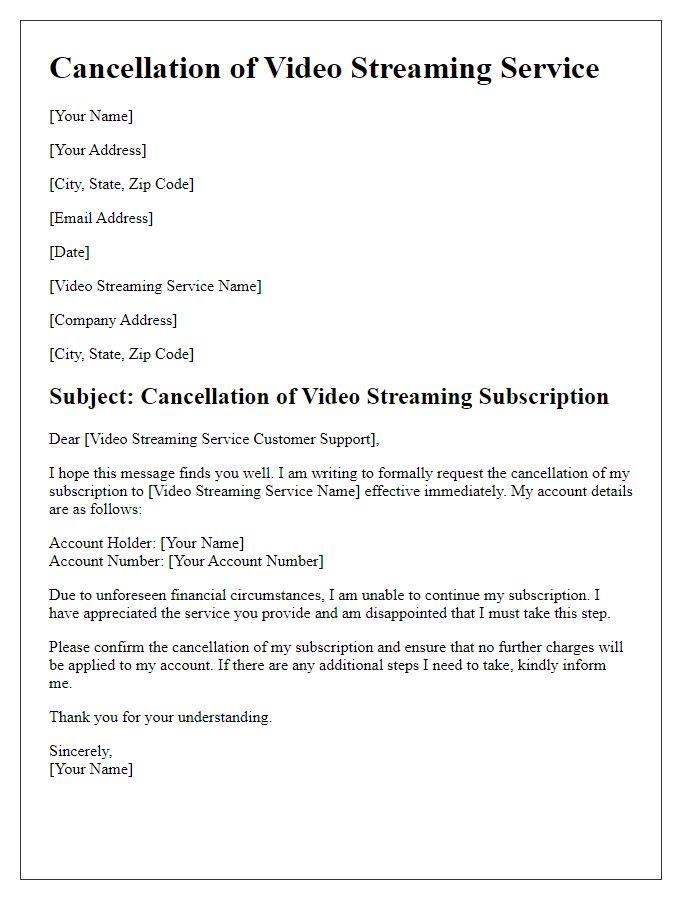
Letter template of video streaming service cancellation with feedback on content
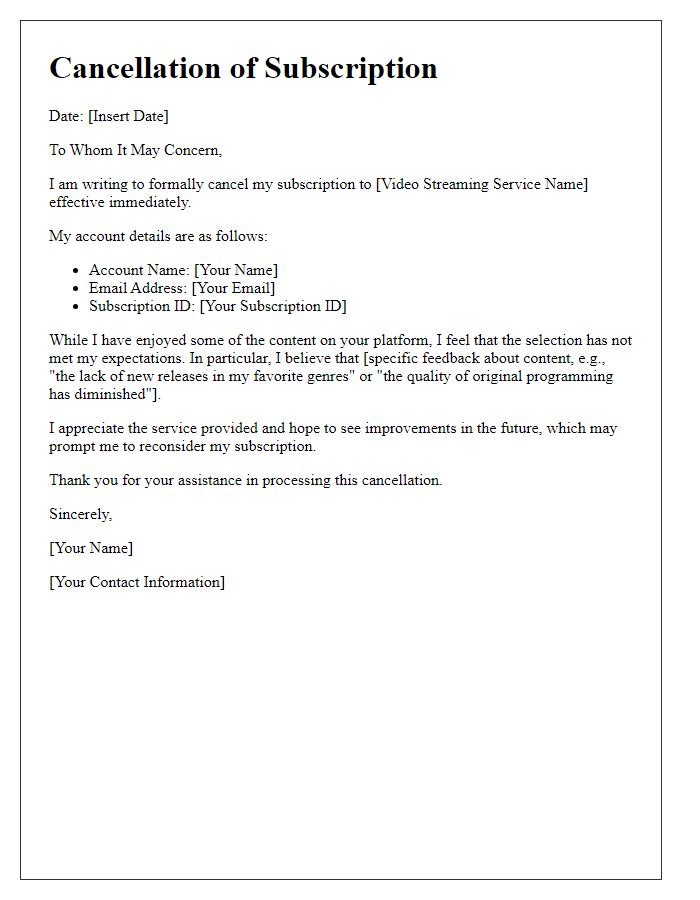
Letter template of video streaming service cancellation due to lack of usage
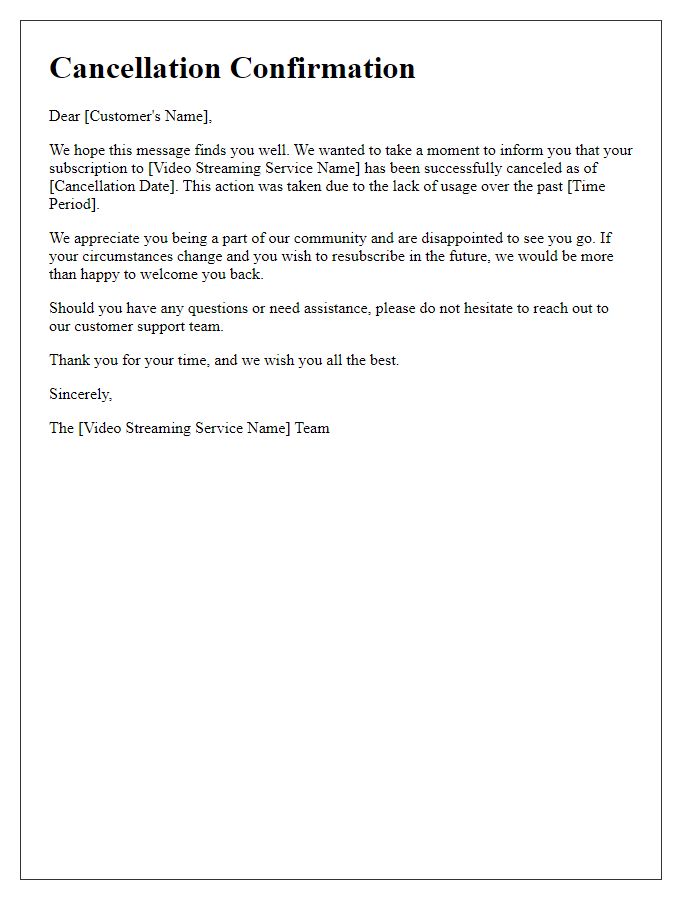
Letter template of video streaming service cancellation after trial period
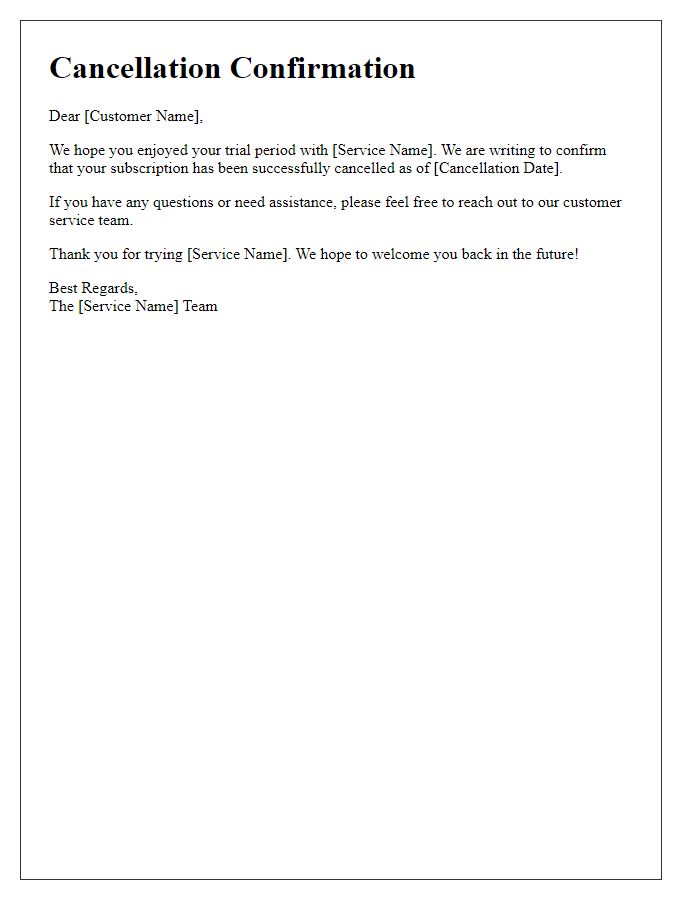
Letter template of video streaming service cancellation for service discontinuation
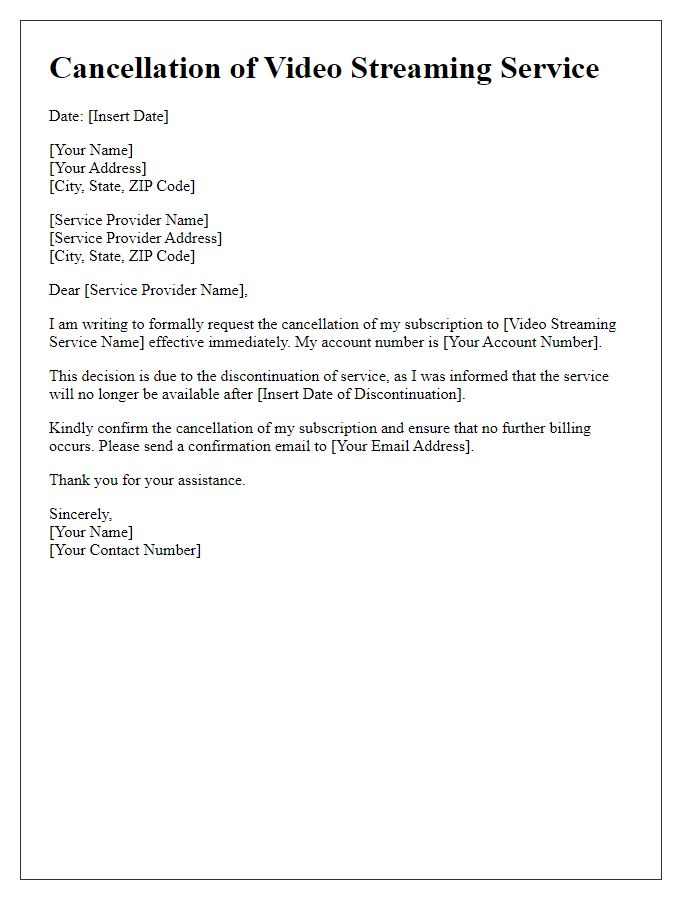

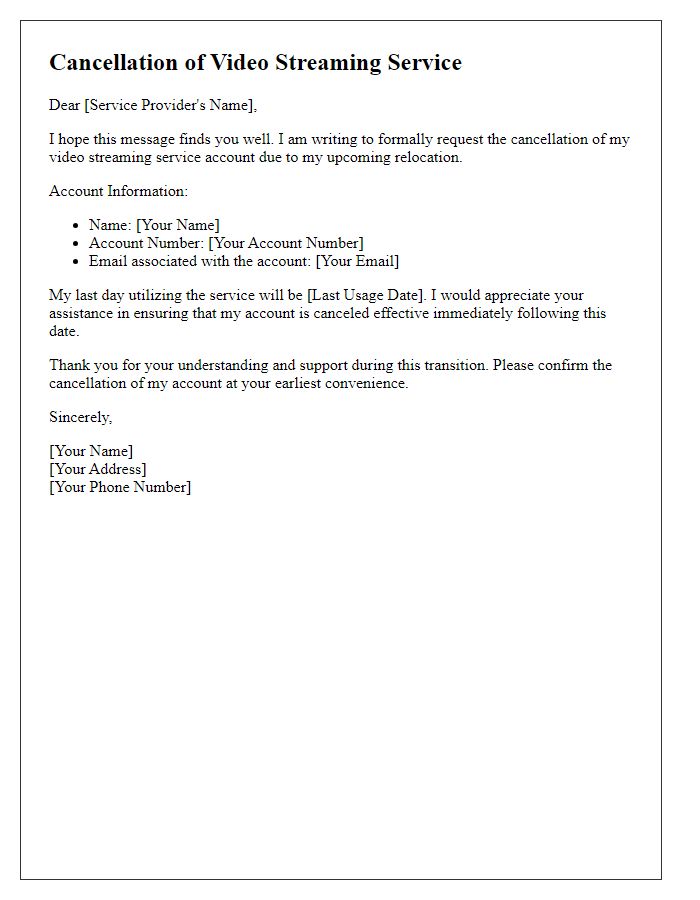
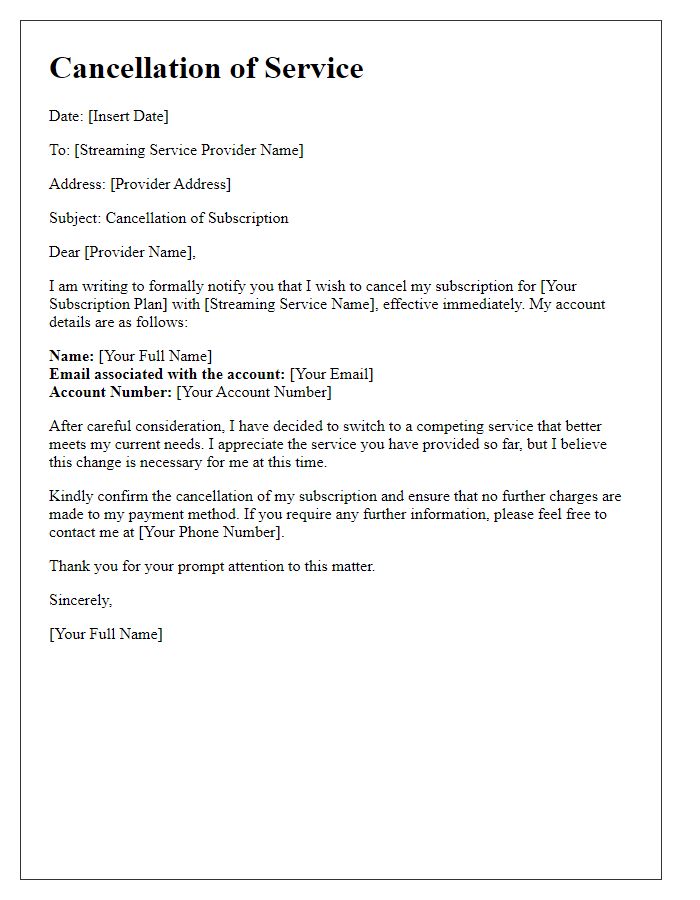


Comments